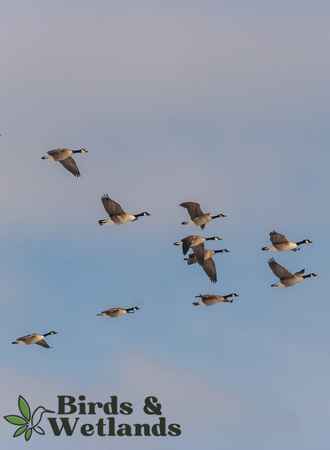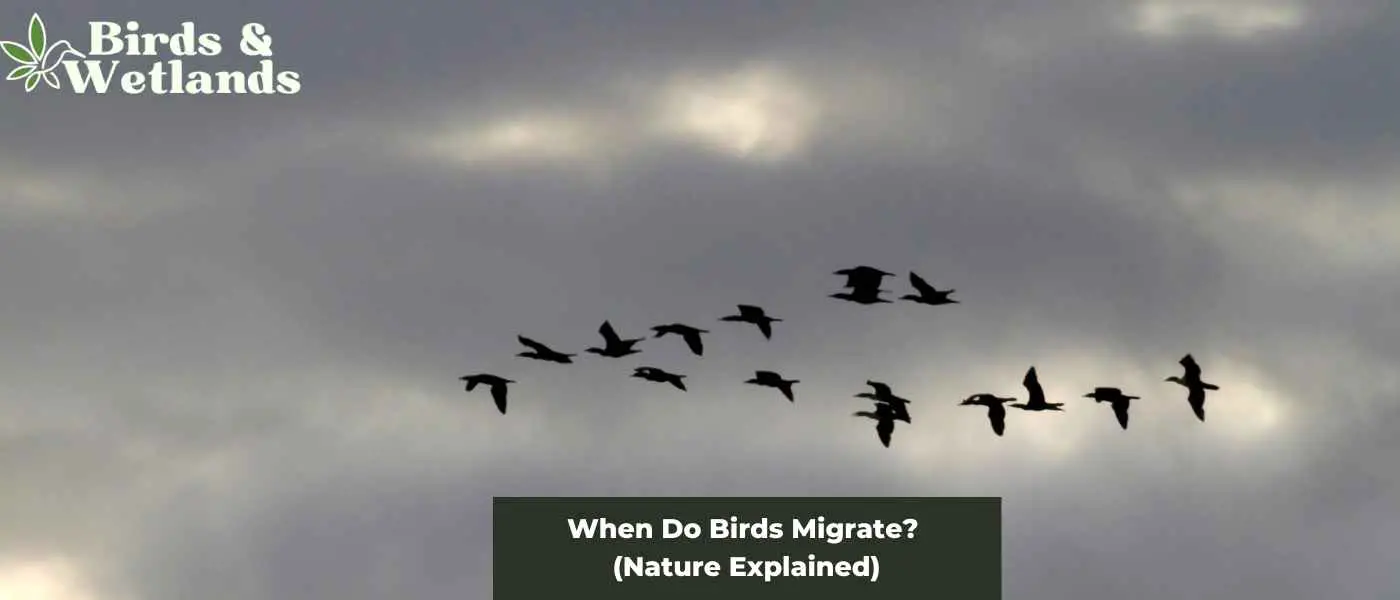Birds are incredible creatures. They can fly and navigate long distances, often arriving safely at their destination. So, when do birds migrate? And where do they end up? So, keep reading to find out!
Key Points on Bird Migration
More than half of the more than 650 North American breeding bird species are migratory, including geese.
Bird migration is a remarkable feat of endurance and resolve. Each year, these tiny creatures embark on a journey that exemplifies natural beauty.
Migratory birds migrate from areas with few or no resources (food and nesting sites) to locations with abundant or increasing resources.
Migration patterns can vary within each different type of bird migration, with short- and medium-distance migrants being the most variable.
Migrating birds can travel thousands of miles in a year, often following the same path year after year with little variation.
Migration is arduous for many bird species due to physical stress, inclement weather and predator exposure.
What is bird migration?
Every year, billions of birds embark on an extraordinary journey. They take to the skies, following ancient routes passed down through generations, armed with superior navigational skills and a strong desire to explore. Known as bird migration, this natural phenomenon is fascinating.
During migration, migratory birds may cover hundreds of miles in a single day, covering thousands of miles in total. They use the sun, the stars, the magnetic field, and even their own sense of smell to navigate. And while many migratory birds travel alone, others travel in flocks numbering in the millions.
Migration between breeding and wintering grounds occurs frequently. For instance, numerous bird species migrate to warmer climates during the winter months to avoid the cold.
The migration timing varies among species and is commonly determined by seasonal changes. Some birds migrate only a handful of times in their lifetime, whereas others may migrate annually.
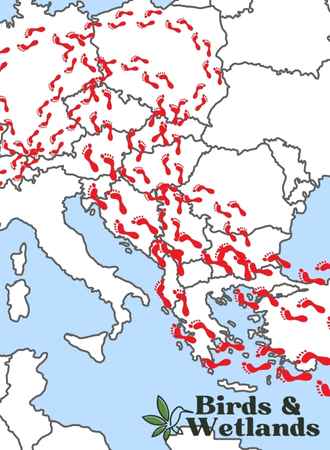
What are the different types of bird migration?
There are different types of migratory behavior.
Permanent Residents
Some birds are permanent residents, meaning they live in the same area all year and do not migrate. Birds such as American robins can find adequate supplies of food and shelter year-round that includes much of the contiguous United States.
Migration can be risky, so permanent residents tend to be those species that are better equipped to deal with the challenges of staying in one place. For example, some permanent resident birds have specialized diets that require specific types of habitat that may not be available in other areas.
Other permanent residents are simply not strong enough to make the long journey migratory birds undertake every year.
A good example of a permanent resident is the Canada goose. While many Canada geese remain migratory, some flocks of these waterfowl stay in their habitat all year and have become non-migratory. This is a common occurrence in many places throughout North America, especially in regions where winters are becoming milder every year.
The resident Canada geese do not need to migrate south in the winter to find open water and grass. In addition, these birds have year-round access to food supplies such as agricultural fields, parks, and suburban lawns.
Humans have created safe havens for these birds, such as golf courses, bird sanctuaries, and city parks. Hence, predators are not a major concern.
Although these birds may have it easy, they still face obstacles due to their proximity to humans. These obstacles include noise pollution, being struck by automobiles, and ingesting toxic chemicals found in urban settings. Despite these obstacles, for many of these birds, the benefits of staying put outweigh the costs.
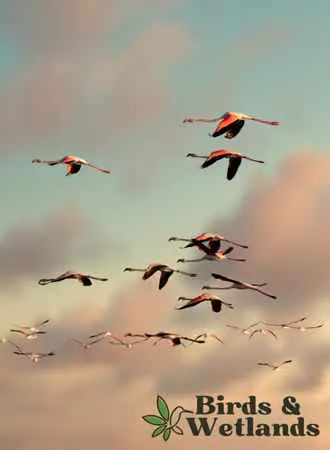
Short-Distance Migrants
Short-distance migrant birds migrate relatively short distances, typically from higher to lower mountain elevations. This is also known as partial migration and is frequently prompted by alterations in the food supply or suitable nesting sites. Many species of warblers, sparrows, and thrushes, as well as some species of ducks, wading birds and shorebirds, are short-distance migrants.
Medium-Distance Migrants
Some birds can long-distance flight, while others migrate between breeding and wintering grounds no more than a few hundred miles apart. Popular bird species such as robins, cardinals, and goldfinches are among these migrants with a medium range.
Medium-distance migrants may vary their migration routes based on weather and availability of food. In contrast, long-distance migrants typically follow the same migration routes year after year. This adaptability allows them to utilize local resources but makes them more susceptible to environmental changes.
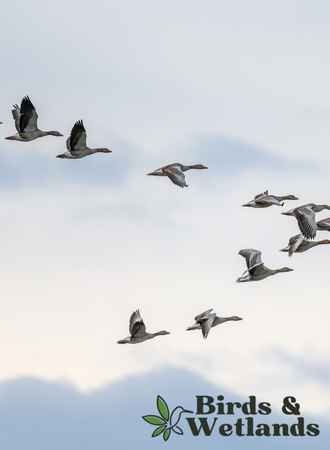
Long Distance Migrants
Migrating birds that travel great distances between their breeding and wintering grounds are long-distance migratory birds. Some migratory species of birds may even circumnavigate the globe in a single year as part of these migrations.
Despite the difficult conditions, approximately 350 species of North American birds undertake long-distance migration to their preferred wintering locations in warmer regions. Most of these birds are songbirds, but a few waterfowl and raptors also undertake long migrations.
Typically, birds use landmarks such as coastlines, mountain ranges, and rivers to guide them to their destination. Before continuing their journey, several migratory species will stop at various waypoints to rest and refuel.
These long-distance migrations are also precisely timed to take advantage of favorable weather conditions and food availability.
When do birds migrate?
Migration may be difficult, but it is essential for the survival of many bird species. Many of them perish while migrating due to a number of reasons such as predation and collision with wind farms, windows and power lines.
Nonetheless, they still make their annual journeys. Why do they even migrate? Food is the primary reason.
Nesting birds in the Northern Hemisphere migrate northward in the spring to take advantage of abundant insect populations, budding plants, and breeding grounds. Additionally, the longer days of the northern summer allow breeding birds more time to feed their young.
As winter approaches and the availability of insects and other food sources decreases, the birds once again migrate south. Also, when birds feel migratory restlessness, they know it’s time to migrate.
Most species start their migration south to their winter grounds in early July but other birds find it safe to wait until the weather gets too harsh or cold. Most birds fly back to their breeding grounds in the spring migration.
This migration pattern ensures they always have access to the necessary resources for survival. Additionally, migratory birds can avoid hazardous weather and predators. By carefully planning their journey, they can take advantage of favorable tailwinds and find safe rest stops and refueling stations.
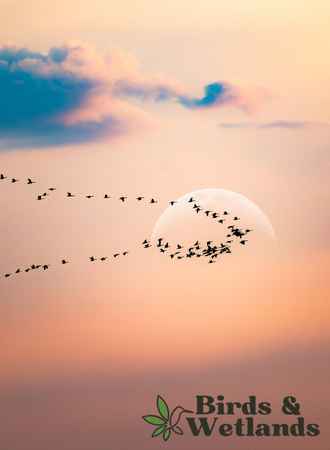
Why don’t birds in the southern hemisphere migrate?
Numerous factors prevent birds in the Southern Hemisphere from migrating. Temperature is the most significant factor.
In the northern regions, winters are cold, and food is scarce, so it makes sense for birds to migrate to warmer climates.
However, there is little variation in the length of the days from month to month in the Southern Hemisphere, particularly in tropical climates of Central and South America. The weather is warm enough for birds to find sufficient food year-round.
In addition, migration requires a great deal of energy, and long-distance travel can be hazardous when predators search for an easy meal.
Why do some birds fly in a V formation?
There are two main explanations for why birds fly in a V formation.
The first is that it aids in energy conservation. When flying in formation, each bird must flap its wings only half as often as when flying alone. The lift provided by the updraft created by the bird in front makes flight easier and less energy-intensive for the birds behind.
The second theory holds that the V formation enables birds to communicate and fly together. The bird in front sets the pace and direction while the others closely follow. If one bird needs to rest or change direction, the others can easily adapt to maintain formation.
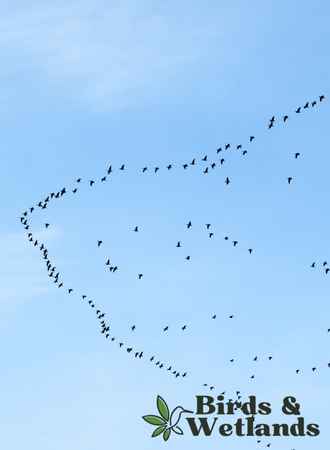
What are migration traps?
A “migrant trap” is a location that attracts an abnormally large number of migrating birds. Think wildlife management areas and refuges.
Typically, these migration hotspots result from local weather conditions, an abundance of food, or the terrain. For instance, areas shielded from harsh winds may be more appealing to weary migrants seeking a place to rest. Or, a region may provide an abundance of easily accessible food sources, such as insects or berries.
In addition, the local topography can create migrant traps by funneling birds into a confined area where they can be observed easily. In some cases, migrating birds may follow a coastline or river instead of flying over open water. This is one of the reasons why barrier islands and
How does climate change affect bird migration?
Bird migrations are being significantly altered by climate change. The effects are more apparent in migration times and winter weather. As the average global temperature has risen, birds have begun their annual migrations earlier. In some instances, this has caused them to miss the peak of the insect hatch, resulting in a population decline.
In addition, some birds are becoming non-migratory as they can find food and suitable nesting sites year-round due to rising temperatures. As birds play a crucial role in seed dispersal and predation, this shift in migratory patterns is likely to have a ripple effect on ecosystems across the globe.
Climate change is having a significant impact on the natural world. Still, we are just beginning to comprehend the full extent of its consequences.
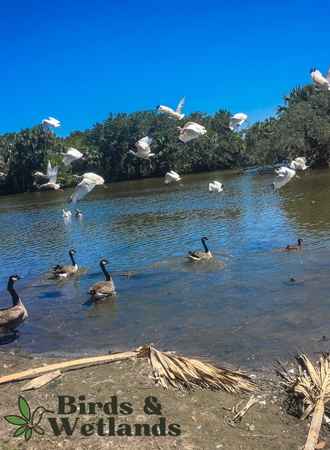
How do birds know where to go?
Birds are incredible creatures, capable of migrating hundreds or even thousands of miles. Even more astonishing is how they know where to go. Birds follow the same routes and utilize a variety of navigational cues. For instance, they can use the sun as a compass and orient themselves based on its position in the sky.
Birds can also use the constellations of the stars to orient themselves. In addition, birds can detect the earth’s magnetic field, which provides them with directional information. Lastly, birds can also use landmarks to navigate, as landmarks observed during the day assist them. Consequently, birds have an extraordinary ability to navigate during migration in the winter and breeding season.
How long does bird migration take?
While some bird species may only travel a few hundred miles to reach their destination, others may travel thousands. The annual migration of the Arctic Tern, which flies from the Arctic Circle to the southernmost tip of Antarctica and back, is the longest migration ever recorded. This journey is approximately 22,000 miles round-trip and takes four months to complete. This is why they have the longest known migration route than other birds.
Given the significance of migration to birds, it is not surprising that they have developed a variety of adaptations to aid them on their journey. For instance, the streamlined bodies of many birds and wind patterns allow them to fly long distances with minimal effort.
In addition, some birds migrate in large flocks and take advantage of nocturnal migration, which protects them from predators and makes it easier for them to locate food and roosting sites. Understanding the complexities of bird migration can shed light on the great capabilities of these remarkable creatures.
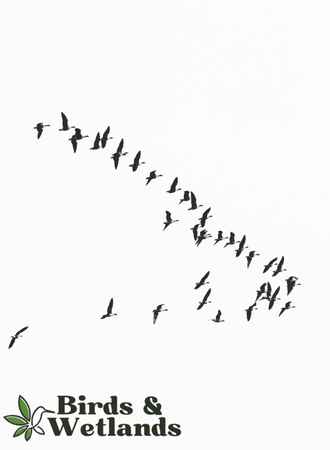
How do birds keep going while migrating?
The migration of birds is an incredible feat of endurance. To undertake such a journey, one must be in excellent physical condition. Generally, larger birds fly faster than smaller birds. Thankfully, nature has provided all birds with several adaptations to help them survive the journey.
Among the most essential is the capacity to store fat. Before migration, birds consume voluminous food to build their energy reserves.
Additionally, birds have specialized muscles for long-distance flight. These muscles allow them to rapidly flap their wings without becoming fatigued.
The ability to navigate using the Earth’s magnetic field is yet another adaptation that aids birds during migration. This allows them to orient themselves and guide without visible landmarks.
Stopover sites, where passage migrants can rest and refuel, are typically utilized by birds. These stopovers generally are near food and water sources, allowing birds to refuel before continuing their journey. Important stopover locations may also protect from bad weather or predators in some instances.
Do soaring birds migrate?
Soaring birds are a group of avian species that have evolved to take advantage of rising air currents. These birds can travel great distances with little effort by remaining in the air for long periods.
Additionally, these large birds can reach heights that would be impossible to achieve through flapping flight alone.
The most common soaring birds include eagles, hawks, and vultures. These birds use their keen eyesight to locate thermals – warm air columns rising from the ground.
Once they find a thermal, the bird will circle within it, gaining altitude until it eventually leaves the thermal and continues.
Like other species of birds, these birds fly south in the winter.
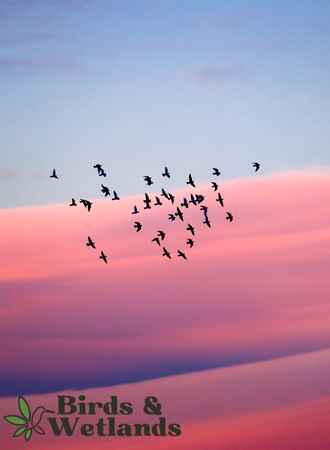
What happens if no birds migrated?
Wild animals migrate to breed, find better food sources and avoid cold frigid temperatures. This journey contributes to the maintenance of healthy populations and genetic diversity. Nonetheless, migration is difficult, and different species of birds perish en route, especially young birds.
If particular species of birds become non-migratory, there would be innumerable repercussions. First, increased competition for habitat space and food would result from birds being forced to live in close proximity. This could increase disease transmission, aggression, and conflict.
Many bird species would perish without migration as they struggled to adapt to shifting environmental conditions.
Migration loss would have a ripple effect on the entire ecosystem, affecting other animals that rely on migrating birds for food. The end of migration would have a far-reaching and catastrophic impact on both the natural world and humanity.
What are the ecological effects of avian migration?
The ecological effects of bird migration are extensive and intricate. Birds play a crucial role in the propagule dispersal of plants and plankton, which contributes to the maintenance of biodiversity.
In addition, they facilitate the migration of other species, such as ticks and lice, which may carry microorganisms that are harmful to human health.
Although avian migration has been studied as a potential disease transmission mechanism, it has been determined that it does not pose a heightened risk. Nevertheless, some viruses that are harmless to adult birds may have devastating effects on human communities.
